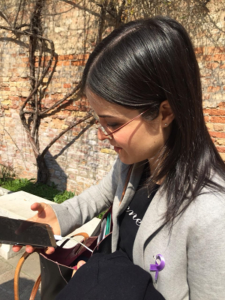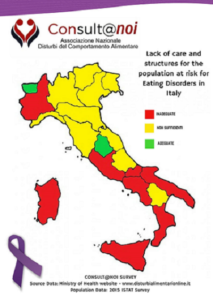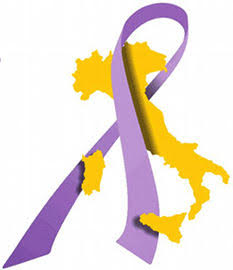Five key actions to curb eating disorders in Italy
Five key actions to curb eating disorders in Italy

A special event in Rome at the Italian Ministry of Health has led to development of counter-actions to stem the proliferation of eating disorders.
by Sandra Zodiaco
To mark the 3rd Italian Women’s Health Day, on April 21, the Italian Ministry of Health organized an event in Rome to celebrate the protection and promotion of women’s well-being. A health village was set up with information desks, free screening and professional advice.
Specific focus was on five issues affecting the psychological and physical health of women, and also the well-being of the entire family unit: gender violence, workplace violence, violence and disability, eating disorders, and prevention and lifestyles.
Dialogue between families and support organisations, patients and former patients, scientific societies and institutions involved in health promotion, resulted in a consensus for solutions to address the critical issues.
Steps to guarantee proper assistance to sufferers of eating disorders and their families
“There is a need to support families, to involve schools more, and above all to talk to young people”, said the Italian Minister of Health, Mrs. Beatrice Lorenzin. “We must understand that an eating disorder is not a fashion, it is not a traditional attitude, but hides a disease typical of this century.”
“Precisely for this reason it is essential for institutions, professionals, families and associations to work together in order to make available, to all, validated and recognized diagnostic and therapeutic tools, with uniform treatment paths throughout the country,” Mrs Lorenzin said.
The Minister said there is a need in each health region for a caring environment and access to care, as well as multidisciplinary settings that include a specialist eating disorder team. In addition, the intervention and assistance networks reveal shortcomings and critical issues with “a fragmented patchwork” distribution nationally; for instance, only nine (out of 20) regions are providing a complete care package.
National survey reveals critical issues

Inadequacy or lack of care in some regions, lack of continuity of care and services dedicated to minors, inappropriateness of admissions in dedicated therapeutic settings and long waiting lists are among critical issues that emerged in a national survey of Consult@noi[1], conducted in 2017, concerning the real welfare status on access to services dedicated to eating disorders, and there were brought to the attention of the Ministry at the Rome event.
While some critical deficiencies have been detected, the full extent remains appears far underestimated, considering the increased incidence of eating disorders in recent years.
The event concluded with agreement on five key actions which the Ministry of Health will undertake in the coming year. It was considered critical to achieve a guarantee, at national level, of uniformity of assistance in the various stages of the disease (prevention, acuteness, rehabilitation). There was agreement also on the vital need to provide health policies capable of implementing a strong planning and organization of services to ensure early recognition of cases, protocols of collaboration with pediatricians and General Practitioners, in addition to a network providing various levels of assistance, starting from the Emergency Department, encouraging activation of “lilac code” pathways, with specific training of all operators for triage, taken into care and continuity of care.
Social media and intergenerational disorders
Eating disorders are illnesses that may be triggered in and vulnerable youngsters, who “feed” on technology and social media. Virtual environments made available by the Internet are easy prey of websites and blogs that convey improper communication (e.g. fake news) that encourages unhealthy life patterns (e.g. thinspiration, pro-ana and pro-mia).
To capture the signs of distress that underlie diseases such as eating disorders – which use the body as a means of communicating a deeper discomfort, a discomfort of the soul – a welcoming attitude and listening to young people is essential, as well as to start from their own potential, to make them consider the dangers and potential risks of the tools they use daily.
Hence, it is important to promote of proactive interventions through the new technologies (dedicated platforms, virtual reality, app), exploiting channels and codes of communication that belong to these generations. The use of virtual reality, for example, is proving very useful to treat the dysmorphic[2] appearance typical of these disorders.
The role of associations in creating a national day to raise awareness
Associations are considered fundamental in conveying and implementing socio-cultural information and awareness-raising measures on eating disorders to (health and non-health) providers, families and citizens. As stated by Dr Claudio D’Amario (Ministry of Health, Director General of Health Prevention) the associations have a level of expertise on the problem, much broader than the health providers because “they live this problem and they are able to identify truly critical issues. ”
 Last but not least, the importance of giving official recognition to the National Lilac Ribbon Day (March 15), which this year, in its seventh edition – saw the participation of more than 100 organisations throughout Italy – was reiterated and emphasized, to raise awareness and increase the population’s attention on eating disorder issues with effective programs.
Last but not least, the importance of giving official recognition to the National Lilac Ribbon Day (March 15), which this year, in its seventh edition – saw the participation of more than 100 organisations throughout Italy – was reiterated and emphasized, to raise awareness and increase the population’s attention on eating disorder issues with effective programs.
Official data on eating disorders in Italy
In Italy more than 3 million people suffer from eating disorders; 95.9% are women and 4.1% are men; although the phenomenon is also progressively increasing among the male population.
The incidence of anorexia nervosa is at least eight new cases for 100 thousand people among women, while for men it is between 0.02% and 1.4%. For bulimia each year there are 12 new cases for 100,000 people among women and about 0.8 among men. The age range in which both disorders occur most often is between 15 and 19. Anorexia is the third most common chronic disease among young people. The mortality risk is 10 times higher in patients with anorexia aged between 15 and 24 than that of their peers.
The number of deaths per year for anorexia nervosa is around 6%; 2% for bulimia nervosa and 2% for other not specified eating disorders (source data: Ministry of Health).
About Sandra
I am 27-years-old and am on my way to full recovery from Anorexia Nervosa, dedicating my time and efforts to fight against eating disorders and the stigma surrounding these illnesses. I collaborate with Mi Nutro Di Vita non-profit association as a volunteer, communication and media manager. I have been coordinator of the Italian Lilac Ribbon Day activities since 2016, and speaker at national conferences and meetings on eating disorders throughout Italy. I am author of the autobiographical book Beyond: Confessions on (my) Eating Disorder(s) (2018) which tells my story of recovery from an eating disorder. Currently I work as a Counselor for international students at Ca’ Foscari University of Venice.
Helpful links
Websites: www.disturbialimentarionline.gov.it / www.consultanoidca.it / www.minutrodivita.it
FB Page: www.facebook.com/Mi-Nutro-Di-Vita-149206435420112/
Twitter: www.twitter.com/minutrodivita
Instagram: www.instagram.com/minutrodivitalilla
Blog: www.minutrodivitalilla.blogspot.com
Take part in World Eating Disorders Action Day
World Eating Disorders Action Day on June 2, 2018 is a global grassroots movement designed for and by people affected by an eating disorder, their families, and the medical and health professionals who support them. Uniting activists across the globe, the aim is to expand global awareness of eating disorders as genetically linked, treatable illnesses that can affect anyone. The Third Annual #WorldEatingDisordersDay will take place on June 2, 2018 with a focus on breaking stigma about Eating Disorders. #WeDoAct2BreakStigma.
Join the virtual campaign on social media and host a local event to share information and advocate for policy change to ensure access to evidence based treatment for all affected.
- http://www.worldeatingdisordersday.org
- https://twitter.com/WorldEDday
- https://www.instagram.com/worldeatingdisordersday/
- https://worldeatingdisordersday.tumblr.com
- Snapchat WorldEDday
[1] Consult@noi is a National Association of 2nd level that brings together 20 associations from all over Italy, composed of family members, patients and former patients, engaged in the fight against eating disorders (www.consultanoidca.it).
[2] Dysmorphobia is the phobia that arises from a distorted vision that one has of one’s outward appearance and is caused by an excessive preoccupation with one’s body image.





